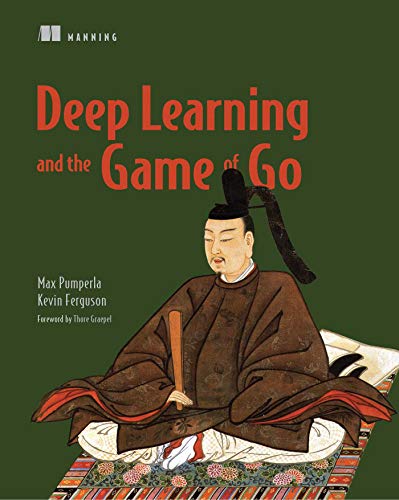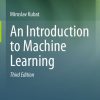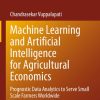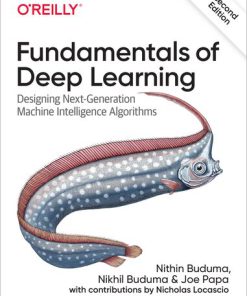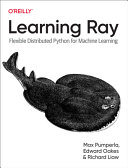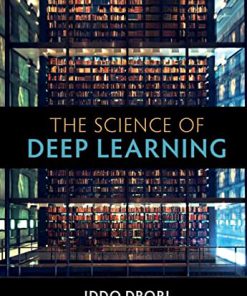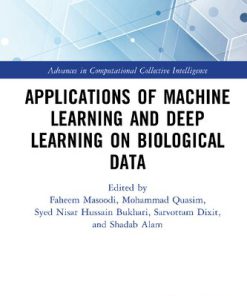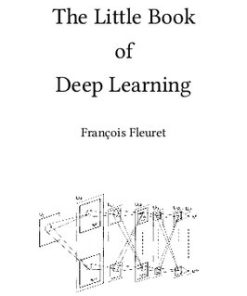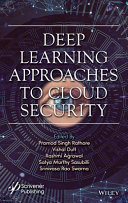Deep Learning and the Game of Go 1st Edition by Kevin Ferguson, Max Pumperla 1638354014 9781638354017
$50.00 Original price was: $50.00.$25.00Current price is: $25.00.
Deep Learning and the Game of Go 1st Edition by Kevin Ferguson, Max Pumperla – Ebook PDF Instant Download/Delivery: 1638354014, 9781638354017
Full download Deep Learning and the Game of Go 1st Edition after payment
Product details:
ISBN 10: 1638354014
ISBN 13: 9781638354017
Author: Kevin Ferguson; Max Pumperla
Deep Learning and the Game of Go 1st Table of contents:
Part 1. Foundations
1 Toward deep learning: a machine-learning introduction
1.1. What is machine learning?
1.1.1. How does machine learning relate to AI?
1.1.2. What you can and can’t do with machine learning
1.2. Machine learning by example
1.2.1. Using machine learning in software applications
1.2.2. Supervised learning
1.2.3. Unsupervised learning
1.2.4. Reinforcement learning
1.3. Deep learning
1.4. What you’ll learn in this book
1.5. Summary
2 Go as a machine-learning problem
2.1. Why games?
2.2. A lightning introduction to the game of Go
2.2.1. Understanding the board
2.2.2. Placing and capturing stones
2.2.3. Ending the game and counting
2.2.4. Understanding ko
2.3. Handicaps
2.4. Where to learn more
2.5. What can we teach a machine?
2.5.1. Selecting moves in the opening
2.5.2. Searching game states
2.5.3. Reducing the number of moves to consider
2.5.4. Evaluating game states
2.6. How to measure your Go AI’s strength
2.6.1. Traditional Go ranks
2.6.2. Benchmarking your Go AI
2.7. Summary
3 Implementing your first Go bot
3.1. Representing a game of Go in Python
3.1.1. Implementing the Go board
3.1.2. Tracking connected groups of stones in Go: strings
3.1.3. Placing and capturing stones on a Go board
3.2. Capturing game state and checking for illegal moves
3.2.1. Self-capture
3.2.2. Ko
3.3. Ending a game
3.4. Creating your first bot: the weakest Go AI imaginable
3.5. Speeding up game play with Zobrist hashing
3.6. Playing against your bot
3.7. Summary
Part 2. Machine learning and game AI
4 Playing games with tree search
4.1. Classifying games
4.2. Anticipating your opponent with minimax search
4.3. Solving tic-tac-toe: a minimax example
4.4. Reducing search space with pruning
4.4.1. Reducing search depth with position evaluation
4.4.2. Reducing search width with alpha-beta pruning
4.5. Evaluating game states with Monte Carlo tree search
4.5.1. Implementing Monte Carlo tree search in Python
4.5.2. How to select which branch to explore
4.5.3. Applying Monte Carlo tree search to Go
4.6. Summary
5 Getting started with neural networks
5.1. A simple use case: classifying handwritten digits
5.1.1. The MNIST data set of handwritten digits
5.1.2. MNIST data preprocessing
5.2. The basics of neural networks
5.2.1. Logistic regression as simple artificial neural network
5.2.2. Networks with more than one output dimension
5.3. Feed-forward networks
5.4. How good are our predictions? Loss functions and optimization
5.4.1. What is a loss function?
5.4.2. Mean squared error
5.4.3. Finding minima in loss functions
5.4.4. Gradient descent to find minima
5.4.5. Stochastic gradient descent for loss functions
5.4.6. Propagating gradients back through your network
5.5. Training a neural network step-by-step in Python
5.5.1. Neural network layers in Python
5.5.2. Activation layers in neural networks
5.5.3. Dense layers in Python as building blocks for feed-forward networks
5.5.4. Sequential neural networks with Python
5.5.5. Applying your network handwritten digit classification
5.6. Summary
6 Designing a neural network for Go data
6.1. Encoding a Go game position for neural networks
6.2. Generating tree-search games as network training data
6.3. Using the Keras deep-learning library
6.3.1. Understanding Keras design principles
6.3.2. Installing the Keras deep-learning library
6.3.3. Running a familiar first example with Keras
6.3.4. Go move prediction with feed-forward neural networks in Keras
6.4. Analyzing space with convolutional networks
6.4.1. What convolutions do intuitively
6.4.2. Building convolutional neural networks with Keras
6.4.3. Reducing space with pooling layers
6.5. Predicting Go move probabilities
6.5.1. Using the softmax activation function in the last layer
6.5.2. Cross-entropy loss for classification problems
6.6. Building deeper networks with dropout and rectified linear units
6.6.1. Dropping neurons for regularization
6.6.2. The rectified linear unit activation function
6.7. Putting it all together for a stronger Go move-prediction network
6.8. Summary
7 Learning from data: a deep-learning bot
7.1. Importing Go game records
7.1.1. The SGF file format
7.1.2. Downloading and replaying Go game records from KGS
7.2. Preparing Go data for deep learning
7.2.1. Replaying a Go game from an SGF record
7.2.2. Building a Go data processor
7.2.3. Building a Go data generator to load data efficiently
7.2.4. Parallel Go data processing and generators
7.3. Training a deep-learning model on human game-play data
7.4. Building more-realistic Go data encoders
7.5. Training efficiently with adaptive gradients
7.5.1. Decay and momentum in SGD
7.5.2. Optimizing neural networks with Adagrad
7.5.3. Refining adaptive gradients with Adadelta
7.6. Running your own experiments and evaluating performance
7.6.1. A guideline to testing architectures and hyperparameters
7.6.2. Evaluating performance metrics for training and test data
7.7. Summary
8 Deploying bots in the wild
8.1. Creating a move-prediction agent from a deep neural network
8.2. Serving your Go bot to a web frontend
8.2.1. An end-to-end Go bot example
8.3. Training and deploying a Go bot in the cloud
8.4. Talking to other bots: the Go Text Protocol
8.5. Competing against other bots locally
8.5.1. When a bot should pass or resign
8.5.2. Let your bot play against other Go programs
8.6. Deploying a Go bot to an online Go server
8.6.1. Registering a bot at the Online Go Server
8.7. Summary
9 Learning by practice: reinforcement learning
9.1. The reinforcement-learning cycle
9.2. What goes into experience?
9.3. Building an agent that can learn
9.3.1. Sampling from a probability distribution
9.3.2. Clipping a probability distribution
9.3.3. Initializing an agent
9.3.4. Loading and saving your agent from disk
9.3.5. Implementing move selection
9.4. Self-play: how a computer program practices
9.4.1. Representing experience data
9.4.2. Simulating games
9.5. Summary
10 Reinforcement learning with policy gradients
10.1. How random games can identify good decisions
10.2. Modifying neural network policies with gradient descent
10.3. Tips for training with self-play
10.3.1. Evaluating your progress
10.3.2. Measuring small differences in strength
10.3.3. Tuning a stochastic gradient descent (SGD) optimizer
10.4. Summary
11 Reinforcement learning with value methods
11.1. Playing games with Q-learning
11.2. Q-learning with Keras
11.2.1. Building two-input networks in Keras
11.2.2. Implementing the ϵ-greedy policy with Keras
11.2.3. Training an action-value function
11.3. Summary
12 Reinforcement learning with actor-critic methods
12.1. Advantage tells you which decisions are important
12.1.1. What is advantage?
12.1.2. Calculating advantage during self-play
12.2. Designing a neural network for actor-critic learning
12.3. Playing games with an actor-critic agent
12.4. Training an actor-critic agent from experience data
12.5. Summary
Part 3. Greater than the sum of its parts
13 AlphaGo: Bringing it all together
13.1. Training deep neural networks for AlphaGo
13.1.1. Network architectures in AlphaGo
13.1.2. The AlphaGo board encoder
13.1.3. Training AlphaGo-style policy networks
13.2. Bootstrapping self-play from policy networks
13.3. Deriving a value network from self-play data
13.4. Better search with policy and value networks
13.4.1. Using neural networks to improve Monte Carlo rollouts
13.4.2. Tree search with a combined value function
13.4.3. Implementing AlphaGo’s search algorithm
13.5. Practical considerations for training your own AlphaGo
13.6. Summary
14 AlphaGo Zero: Integrating tree search with reinforcement learning
14.1. Building a neural network for tree search
14.2. Guiding tree search with a neural network
14.2.1. Walking down the tree
14.2.2. Expanding the tree
14.2.3. Selecting a move
14.3. Training
14.4. Improving exploration with Dirichlet noise
14.5. Modern techniques for deeper neural networks
14.5.1. Batch normalization
14.5.2. Residual networks
14.6. Exploring additional resources
14.7. Wrapping up
14.8. Summary
Appendix A. Mathematical foundations
Vectors, matrices, and beyond: a linear algebra primer
Vectors: one-dimensional data
Matrices: two-dimensional data
Rank 3 tensors
Rank 4 tensors
Calculus in five minutes: derivatives and finding maxima
Appendix B. The backpropagation algorithm
A bit of notation
The backpropagation algorithm for feed-forward networks
Backpropagation for sequential neural networks
Backpropagation for neural networks in general
Computational challenges with backpropagation
Appendix C. Go programs and servers
Go programs
GNU Go
Pachi
Go servers
OGS
IGS
Tygem
Appendix D. Training and deploying bots by using Amazon Web Services
Model training on AWS
Hosting a bot on AWS over HTTP
Appendix E. Submitting a bot to the Online Go Server
Registering and activating your bot at OGS
Testing your OGS bot locally
Deploying your OGS bot on AWS
Index
List of Figures
List of Tables
List of Listings
People also search for Deep Learning and the Game of Go 1st :
deep learning go
deep learning games
deep learning game theory
the deep game
Tags:
Kevin Ferguson,Max Pumperla,Deep Learning
You may also like…
Computers - PC & Video Games
Computers - Artificial Intelligence (AI)
Fundamentals of Deep Learning by Nikhil Buduma 9781492082132 1492082139
Engineering - Computer Technology
Computers - Artificial Intelligence (AI)
The Science of Deep Learning by Iddo Drori 9781108883375 1108883370
Computers - Applications & Software
Applications of Machine Learning and Deep Learning on Biological Data 1st Edition Faheem Masoodi
Computers - Other
Computers - Cybernetics
Education Studies & Teaching - School Education & Teaching

